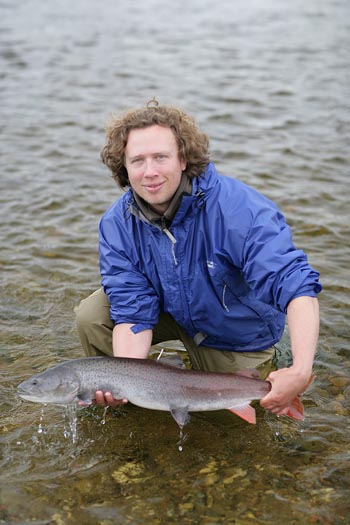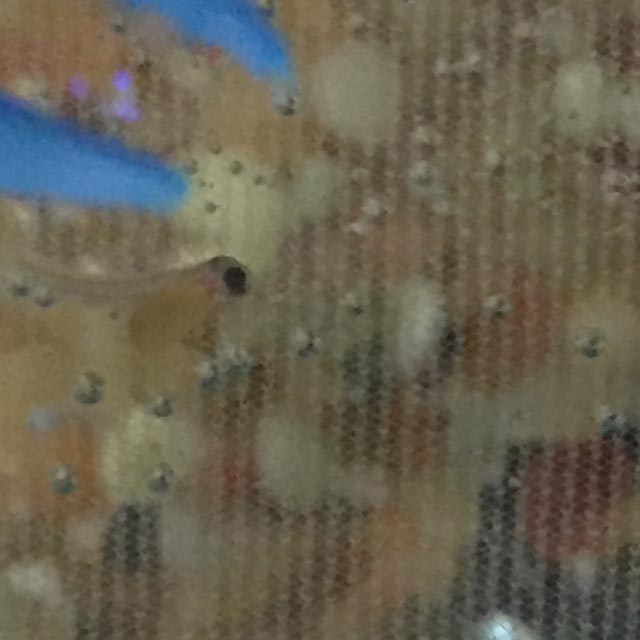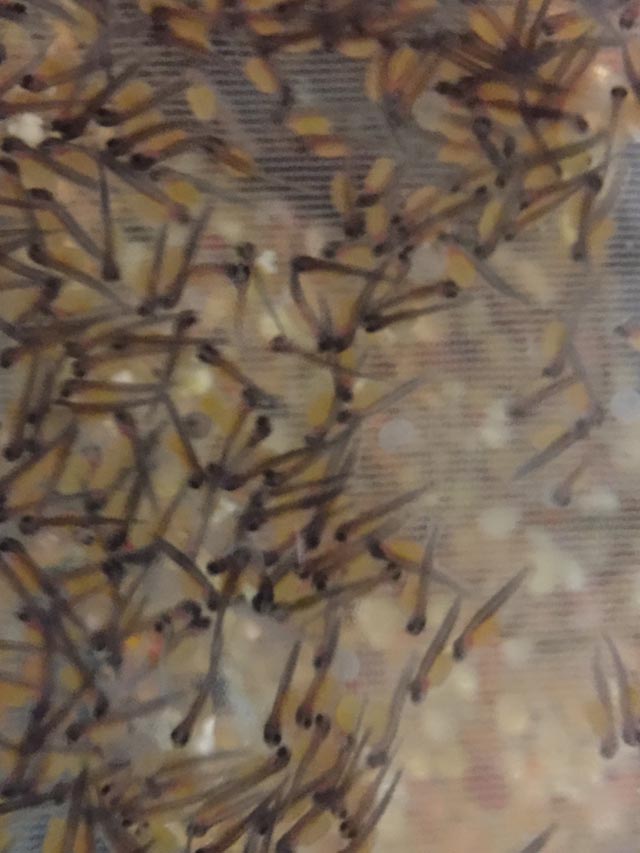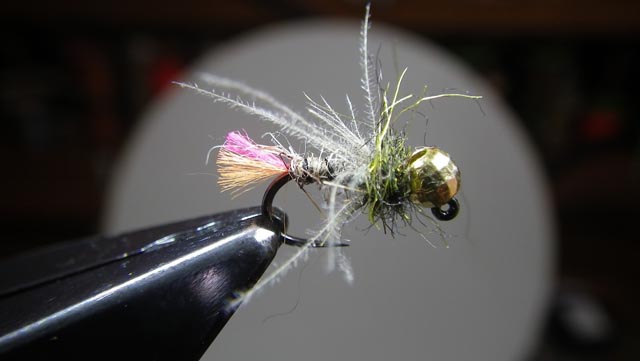


|

|
November 2016 |
|
News & EventsGeneral Meeting - Tuesday, November 8, 2016Olaf Jensen

The lakes and rivers of Northern Mongolia are among the most pristine freshwater ecosystems in the world. Nevertheless, threats including climate change, overfishing, and mining have placed several of Mongolia’s salmonid fishes at risk. Populations of taimen (Hucho taimen) – the world’s largest salmonid – have become the target of growing recreational fisheries despite the fact that taimen are classified as “endangered” on Mongolia’s red list. Do these largely catch & release fisheries represent a risk to taimen or an incentive for their conservation? Within the same region, Lake Hovsgol represents a unique opportunity to disentangle the effects of climate change from other human impacts on aquatic ecosystems. Lake Hovsgol is the 17th largest lake in the world by volume and relatively free of human impacts such as urban development, pollution, overfishing, and invasive species. However, the Lake Hovsgol region has experienced an air temperature increase of more than 2 °C over the past 40 years – a rate more than three times faster than the Northern Hemisphere average. Drying of tributary streams threatens the endangered endemic Hovsgol grayling (Thymallus nigrescens). How have such changes impacted the rest of the Lake Hovsgol fish community and can this lake serve as a model system for understanding climate change effects on aquatic ecosystems? Olaf Jensen is an Associate Professor in the Department of Marine and Coastal Sciences at Rutgers University. He studies fisheries and aquatic ecosystems, including marine, estuarine, and freshwater environments, with the goal of improving the scientific basis for sustainable management. Dr. Jensen’s work relies on a combination of mathematical modeling, data synthesis and field studies in locations ranging from the Louisiana salt marsh to coastal New Jersey and Mongolian lakes and rivers. American Legion Hall
|
Trout in the ClassroomThe Clark Mills Elementary school, in Manalapan, is a new addition to the Trout in the Classroom program this year. They are one of four schools in Manalapan Township that joined the program this year. They have been providing us with weekly updates on the goings on in their fish tank. Below are some photos of the eggs and alevins taken during the first two weeks of the programs. They have been sending us videos as well which you can see on our Facebook page. We are looking forward to more of their updates. 
Egg Day
The First Hatched Egg
The Hatched Trout After Week One
The Trout after Week Two |
President’s LetterNovember 2016Well the weather is just right for Fall fishing, however, we are still in a drought with very low water. We've had some improvement in the last few weeks with some decent rain events. With the slight rise of water levels, I'm planning on wetting a line later this week. This is all in an effort and with hope of having a few trout take my offerings. Since I was seven nothing has thrilled me more than having a trout struggle at the end of my line. There have been a few periods in my life where I chased other fish. Nevertheless, I always return to my first love, that being trout. It doesn't matter if it's a nine inch stocker or a twenty inch native. My father, Russell, gave me that love of trout sixty years ago and it still remains. The November meeting is the month at which we hope to fill out our slate of nominations for our Board of Directors. There are still a few director slots to be filled. If you have the desire to do some extra work to improve and guide our Chapter's efforts, I urge you to step forward. It need not be during the General Meeting on Nov. 8. If you would like discuss making a commitment, have any questions, or would prefer not volunteering at the meeting, please e-mail me at grhryvniak@yahoo.com. Otherwise, please let us know when we open the floor for nominations. A complete slate of Directors lessens the load of all Board members. I signed my name along with the other New Jersey TU Chapter Presidents on a letter to support the Delaware River Basin Conservation Act. This legislation will establish habitat protection and improvement along with federal competitive grants to improve the Delaware Watershed. Keep in mind that the Musky where CJTU has expended so much time, labor, and funds is part of that watershed. It's a bill that would benefit all of us. For more information on the legislation go to www.delriverwatershed.org. During the last month we have begun to explore several different stream improvement projects. If you attended the October meeting, you saw the length of time and the degree of work it took to make the TCA Point Mountain stretch of the Musky what it is today. We learned an awful lot from that endeavor. With our experience and with combining our efforts with one or more Chapters of TU, we hope that our next project is completed in significantly less time than the Point Mountain project. I feel it would be exciting to see which stretch of water will reap the rewards of our involvement. As the months pass, we'll let you know how we are progressing with our new project. The Trout in the Classroom (TIC) program is indeed something special. It's a joy for a few of our members assisting and watching school children raise trout from the egg stage until they release them in a stream at about five inches. Last month I joined Bart Lombardo in delivering trout eggs to four schools in Manalapan. When we arrived the administrative staff, teachers and children welcomed us. The children at each school made signs which read "EGG-CITED". To see what is happening with the trout eggs we delivered, go to our Facebook Page, "Central Jersey Trout Unlimited". I believe it is the hope of all participating members that some of these young children become stewards of coldwater fish habitat twenty years or so from now. I hope to see you at our meeting on Tuesday, November 8 (after you vote of course!) To those unable to make the meeting, I wish you "Tight Lines".
Tight Lines |
Fly of the MonthAn Updated and Expanded Fly of the Month ProgramOur Chapter has many excellent tiers who produce a wide variety of productive flies for use in fresh and salt waters. The sets of flies submitted to the Fly Swaps for the last three seasons confirm this. Yet, submitted flies have not been shared in our Fly of the Month feature in Mainsteam. So a contributor’s thoughts on a fly and specific tying instructions are just lost. We’d like to change this by having one fly submitted in previous Fly Swaps featured as the Fly of the Month. Further, we want not only to publish the description of the fly but to have the contributor tie the fly at the Chapter Meeting for that month. “Fruit Salad ”Tied by Bart Lombardo

I discovered this pattern about a year ago on a blog hailing from England called the North Country Angler. I was intrigued by the pattern and tied up a few to try. This fly turned to be an instant success. I don't know if I can attribute the fly's effectiveness to its buggy profile or the hot spot of contrasting colors, all I know is...it works. Originally tied on a jig hook, I have also enjoyed success with the pattern tied on a standard nymph hook. I've included pictures of both as a reference. Like the fly's creator, I prefer to fish them in smaller sizes. I have tied the pattern as large as a size twelve to use as an anchor fly in heavy, off color flows. It caught fish but I think the smaller versions were far more effective. I'll be tying the pattern at the November meeting so if you want to know more about the pattern stop by and see me - Bart Lombardo Click here for the recipe! |